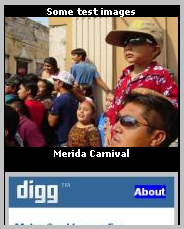 This is a repost from our archives. There were lots of posts written before the move to WordPress that have kind of gotten lost. From time to time, we’ll pull these out and reopen the conversation.
This is a repost from our archives. There were lots of posts written before the move to WordPress that have kind of gotten lost. From time to time, we’ll pull these out and reopen the conversation.
When MMM got started, a frequent thought of mine was about the early church and if the technology that we have today could have been relevant in any way. One of the easiest correlations was with Paul [love of] writing and the fact that so many are writing today via blogs. Many articles were written about what this could look like if Paul did have a blog, but one aspect of having a blog is being able to blog. We’d have to assume that Paul would have liked the GSM setup that most of Europe has now (though he would need a waterproof phone) for traveling purposes. But what would his blogging platform look like? I personally don’t see him as a Facebook or MySpace-type person (easily Peter and John would be involved in those). But I do see him with something like Mob5.
I learned about Mo5 via its review at Wap Review and noticed that while it is short on features compared to some of the more entrenched social networking software applications, this one is incredibly versatile in that it is very usable on a mobile device. From the Wap Review article:
…I am impressed with Mob5.com’s technology for adapting images to various mobile browser screen dimensions. Mob5 is resizing images to literally the largest exact size that will fit the browser’s screen width. When I tried impersonating various mobile browsers using the the Firefox User Agent Switcher extension Mob5 would deliver the same image resized anywhere from 90 to 183 pixels wide. It worked well, in most cases delivering the largest possible image that would fit the screen without horizontal scrolling. I never got an image that was too wide for the screen. When Mob5 doesn’t recognize a browser it renders images 90px wide which will safely fit on any phone’s screen…
A pretty impressive feat for any website, let alone one that is a blog which serves several types of audiences. Paul would be able to speak to the various communities, and they would all (via the mobile tech) have a link to one another to share how God is working within their communities. Not all all much different than the functionality that sending and reading the letters did for the fellowships (in many cases, the same letter was read in multiple churches).
Mob5 is an interesting use of mobile tech and I am sure that as communities, companies, and people get more in tuned with how they want tech to be a part of their lives, services such as Mob5 will be right there with the enablements.
Other similar services/programs are available, such as MSN Spaces, and as we come across them at MMM, we will cover them and how they can be used for your organization or ministry.